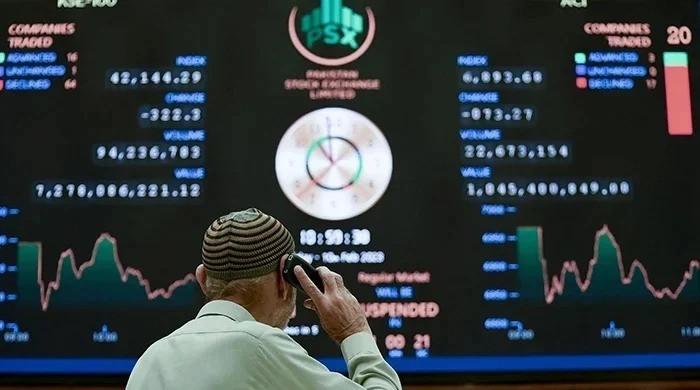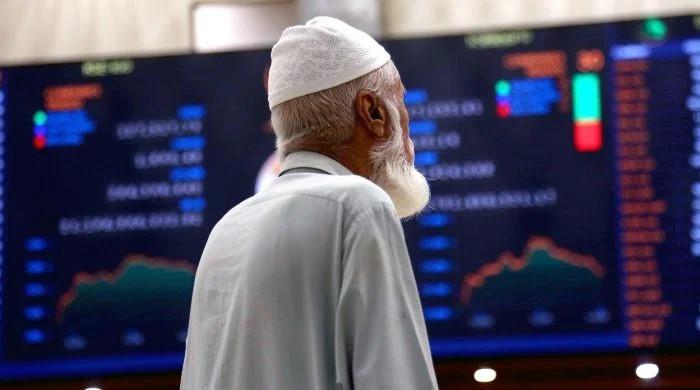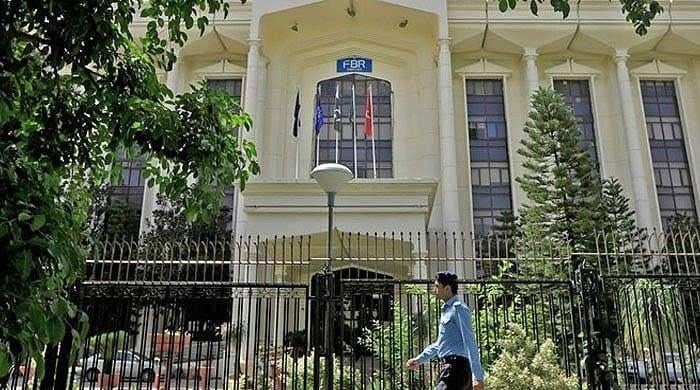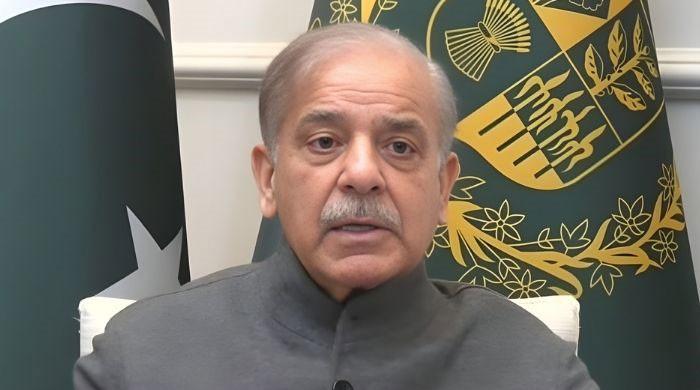Pakistan no longer at default risk as all debt obligations met: Finance ministry
Ministry of Finance issues monthly economic outlook, says Pakistan requires manageable current account deficit
November 30, 2022

- Ministry of Finance issues monthly economic outlook.
- Outlook states Pakistan requires manageable current account deficit.
- Says government has a vibrant financial plan in place for FY23.
ISLAMABAD: Pakistan has met all its debt obligations in a timely manner and the country is comfortable with its medium to long-term obligations, the Ministry of Finance stated in its monthly economic update and outlook report released on Tuesday.
Highlighting the importance of averting the balance of payment crisis for Pakistan, the stated that the county requires a manageable current account deficit and its guaranteed financing by healthy financial inflows on the external accounts.
The government has a vibrant financial plan in place for FY23. Over the medium term, sustainable growth requires economic fundamentals based on balanced economic policies, the report stated.
It added sufficient investment is needed to increase production capacity and productivity in the economy to realize the high growth of potential output. Stabilizing the output gap demands accommodative fiscal and prudent monetary policy to ensure a balance growth path.
The finance ministry’s monthly outlook report mentions during the first quarter of FY23, the acceleration in total expenditures outpaced the growth in revenues. The additional requirement of substantial expenditures on flood-related activities has brought various challenges to fiscal sustainability.
Furthermore, in an already constrained fiscal position, the government is compelled to allocate additional funds to maintain the law-and-order situation due to the ongoing long march in the country.
All these factors would put pressure on total expenditures. On the revenue side, although FBR tax collection has maintained its growth trajectory above 16% during the first four months, the slowdown in economic activity due to floods and political activity may have some repercussions on tax collection.
The MEI shows positive but slower economic growth during the first four months of the current fiscal year. The lower pace of economic activity especially due to floods also weighs on tax revenues. However, the support of the government to the most needed income groups as well as key sectors of the economy especially agriculture will help in turning the economy toward normal.
Inflationary pressure is expected to marginally ease out month-on-month basis due to smooth domestic supplies, unchanged energy prices in November and a stable exchange rate. Further, the recent PM Package for agriculture has made an optimistic crop outlook, which will decelerate food inflation in the months ahead.
Moreover, the food supply chain disruption caused by flash floods is also settling down which has smoothened the food and other related markets. Thus, food inflation is also expected to remain on the lower side because the administered prices are maintained restricting the pass-through of energy-led inflation.
Though international commodity prices are showing an upward trend on yearly basis and being net importers, the country affected by it, the stable exchange rate, government’s administrative, policy and relief measures are providing a cushion to absorb its impact.
It is expected that CPI inflation will marginally decline in the month of November on a yearly basis and may remain in the range of 23-25%.
Agriculture delayed sowing of wheat crops in Sindh is making it challenging to achieve the targets set for the Rabi-2022-23 season. However, the supporting measures by both federal and provincial governments may reverse the negative effects on the agriculture sector.
The large-scale manufacturing cyclical component of Pakistan, although remained positive, but showing convergence to that of its main trading partners as it remained below its potential path in September 2022.
For October, the LSM is expected to show moderate positive growth both on a yearly and monthly basis if no adverse shock is observed. However, shocks emanating from floods and energy crises represent downside risks.
“Several high-frequency indicators point to lower growth since the start of the current financial year,” stated the economic report, adding they are reflected in the monthly economic indicators (MEI) which continues to remain on a lower path of economic expansion.
Although the economic situation is faced with severe headwinds following the devastating floods and the higher energy prices, the government has supported the incomes of the most needed as well as key sectors of the economy. As a result, it is highly expected that contraction or recession will be avoided.
According to BOP data, October imports of goods and services were at $5.3 billion marginally lower than their level of $5.6 billion observed in September. Exports of goods and services ended at just around $2.8 billion in October compared to the $3 billion mark observed in September.
In fact, imports have roughly stabilized at relatively low levels during the first four months of FY23. The soothed international oil prices, stable exchange rate, and contained domestic demand are contributing to the decline in imports. Given these recent dynamics and under unchanged policy assumptions, imports would remain at around current low levels during the coming months.
On the export side, sluggish foreign demand, and domestic supply issues, following the floods-induced destruction of exportable crops are responsible for the weak export performance. However, in the coming months, it is expected that exports will improve on account of targeted policies announced recently by the government to stimulate exports.
These dynamics may be hindered if the economic conditions in the main export markets remained volatile and uncertain. As a result, the trade balance in goods and services has marginally improved. For November 2022, further improvement in the trade balance is expected. Remittance inflows are expected to remain above its current level. Given the expected other components of secondary income, as well as primary income balance, the expected improvement in the trade balance will be reflected in the current account balance, the report concluded.
Originally published in The News









